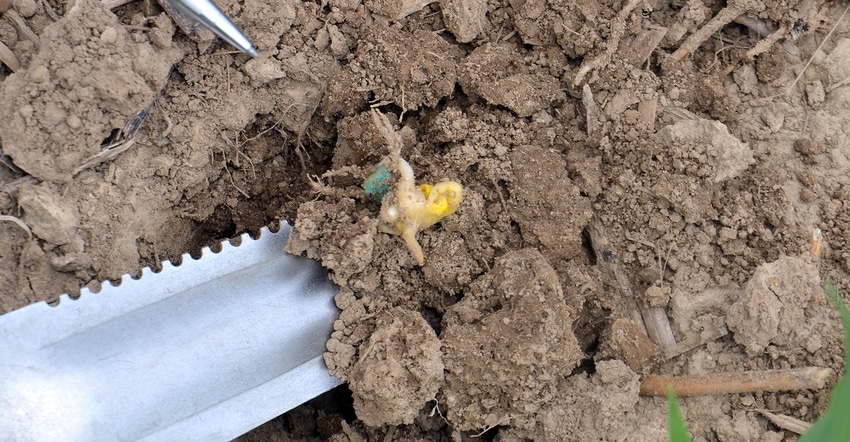
When Dave Nanda walks a cornfield, he doesn’t like to see a gap in a row. “If I kept finding those over and over and I was the grower, it would bother me,” says Nanda, director of genetics for Seed Genetics Direct.
Recently, while walking a young cornfield, Nanda shared his thoughts about what can cause gaps in corn rows, and what he would do to solve it:
First step: Dig! Over the past three seasons walking cornfields, Nanda has stopped at numerous gaps when corn is at the three- to five-leaf stage, pulled out his trowel and started digging. About 4 times out of 5, he finds either a seed that didn’t germinate or a seedling that leafed out underground.
“You can’t just assume the planter didn’t drop a seed,” he explains. “Occasionally, it is a real skip, but not often. If you find a pattern of true skips, then go over it before next season.”
Failure to launch. Occasionally, a seed simply doesn’t germinate, Nanda says. If you plant 32,000 seeds per acre and the seed germination is 95%, you should expect 30,400 seeds per acre. Many seed tags on corn list germination at 95%.
“That is the minimum germination,” Nanda says. “It often is better than that. So, you may plant 32,000 and find average populations above 31,000. What you should count on when figuring seeding rates, however, is 95%.
“That means if you want an actual stand count of 32,500, you should drop 34,210 seeds per acre. If conditions are right and germination and emergence go well, you may wind up with more than 32,500. But if temperatures turn cool or a hard rain causes a crust, you may wind up with less than 32,500.”
Weaker seeds. Once in a while, a seed that would germinate and produce a plant under good conditions may struggle if it’s too wet or too cool.
“We had a cool spring this year, and when I dug in some gaps, I found a small seedling,” Nanda explains. “The seed germinated, but it didn’t have enough strength to get the seedling through the soil when conditions weren’t ideal.”
Soil type variation. Some of the fields Nanda walks each year are lighter-colored, silt loam soils with 2% to 3% organic matter. Those soils are more subject to surface crusting or developing compacted layers than darker soils with more organic matter, although dark soils can compact if abused.
“If you keep seeing more gaps than you like every year, but the plant spacing overall is good, then it’s not likely a planter issue,” Nanda says. “You can dig to confirm it. If you find a seed or seedling underground 80% of the time in that gap, it’s not the planter.
“If you’re planting 32,000 to 34,000 seeds per acre, hoping for 32,000 to 33,000 plants per acre, but always winding up right at 30,000 instead, one thing you can do is increase your seeding rate. You may still get some gaps if conditions aren’t favorable, especially on lighter soils, but if you plant more seed, you have a better chance of winding up at the plant population you need to bump up yield.”
About the Author(s)
You May Also Like




